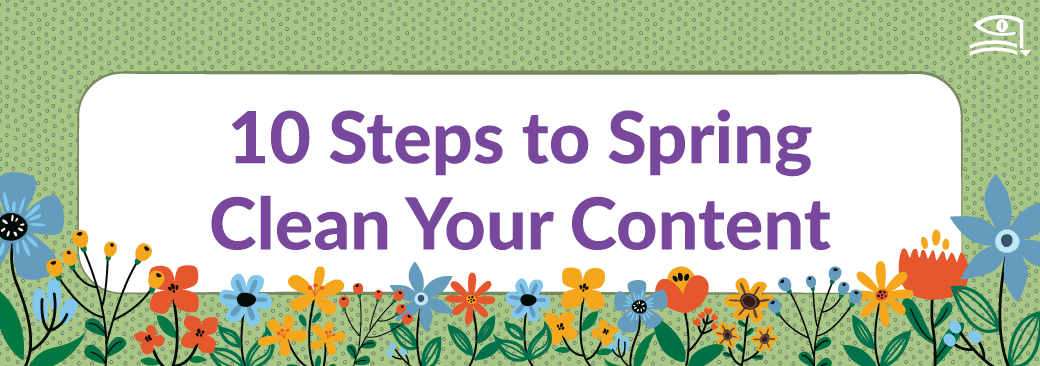Spring is here, and with the new season comes the perfect opportunity to clean up your marketing efforts. One area that can often use some attention is your content. Whether you’ve been publishing consistently for years or are just starting out, taking some time to refresh and optimize your content can pay off in a big way. In this blog post, we’ll cover 10 steps to help you spring clean your content and improve your marketing results.
1. Take a Fresh Look at Your Content
The first step in any content spring cleaning is to take a fresh look at what you’ve published in the past. Start by going through your blog posts, social media updates, email newsletters, and any other content you’ve created. Look for opportunities to update or repurpose existing content, as well as areas where you can create new content to fill in any gaps.
2. Audit Your Content Strategy
Once you’ve reviewed your existing content, it’s time to take a step back and audit your content strategy. This involves looking at your target audience, your goals, and your metrics to ensure that your content is aligned with your overall marketing strategy. After you’re happy with your audit, make any necessary adjustments to ensure that your content is optimized to meet your objectives.
3. Evaluate Your Keyword Strategy
Your keyword strategy is a critical component of your content strategy, as it helps you get found by the right people online. Take some time to evaluate your current keyword strategy and make sure that your content is optimized for the right keywords. Look for opportunities to target new keywords that can help you reach your ideal audience.
4. Update Your Headlines and Meta Descriptions
Your headlines and meta descriptions are the first things that people see when they come across your content online. Make sure that your headlines are attention-grabbing and optimized for your target keywords. Also, review your meta descriptions to make sure that they accurately reflect the content of your pages and include your target keywords.
5. Optimize Your Images and Videos
Images and videos are essential components of any content strategy, but they can also slow down your website if they’re not optimized correctly. Review your existing images and videos and optimize them for speed and performance. This includes compressing your images, adding alt text and captions, and using video compression techniques to reduce file sizes.
6. Make Your Content More Shareable
If your content isn’t getting shared on social media, you’re missing out on a valuable opportunity to expand your reach. Take some time to review your social sharing buttons and make sure that they’re working correctly. Also, consider adding social proof elements, such as social share counts or testimonials, to encourage more people to share your content.
7. Review Your Calls to Action
Your calls to action are the key to turning your website visitors into leads and customers. Make sure that your calls to action are visible, easy to understand, and optimized to align with your marketing goals. This may involve updating your button copy, creating new offers, or tweaking the placement and design of your calls to action. With a little trial and error, you may find a new call to action that yields better results.
8. Improve Your User Experience
User experience is an essential factor in the success of any marketing campaign. Review your website and other digital assets to ensure that they’re user-friendly and easy to navigate. Make sure that your content is well-organized and easy to find, and that your website is optimized for speed and performance.
9. Experiment with New Formats
Content formats are constantly evolving, and it’s important to stay on top of new trends and formats. Consider experimenting in new platforms, such as podcasts, webinars, or interactive content, to see what resonates with your audience. This can help you reach new audiences and expand your content marketing efforts. You may also discover new platforms that allow you to communicate with your existing audiences in new and helpful ways.
10. Analyze Your Results
Finally, it’s essential to analyze your results to determine the effectiveness of your content marketing efforts. Use tools like Google Analytics to track your website traffic and engagement metrics, such as time on page and bounce rate. This data can help you identify areas where your content is performing well and areas where you need to make improvements.
In conclusion, spring cleaning your content is an essential component of any successful content marketing strategy. By taking the time to review and optimize your existing content, you can improve your search engine rankings, expand your reach, and ultimately drive more leads and sales. Follow these ten steps to spring clean your content and see the results for yourself!
